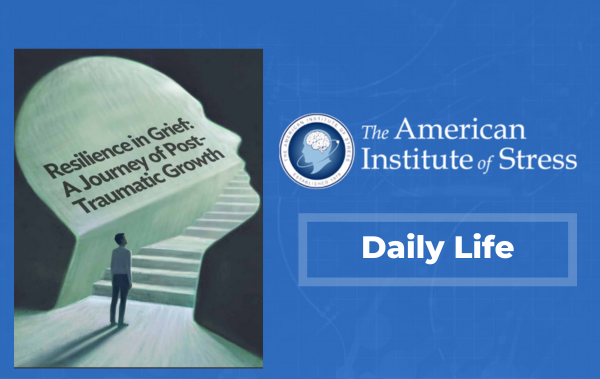 Recent studies show that the pandemic, quarantine, and the prolonged nature of risk has affected the mental health of workers at every echelon of the career ladder. Few employees are exempt from the stressors and required changes. And a new Gallup study found that employees are 20% less likely to say they are well prepared to do their jobs now than a month ago due to the pandemic.
Recent studies show that the pandemic, quarantine, and the prolonged nature of risk has affected the mental health of workers at every echelon of the career ladder. Few employees are exempt from the stressors and required changes. And a new Gallup study found that employees are 20% less likely to say they are well prepared to do their jobs now than a month ago due to the pandemic.
Americans Are Getting A Negative Mental Health Score
Morneau Shepell, a leading provider of mental, physical, social, and financial well-being HR solutions, surveyed 5,000 employees between May 29th and June 9, 2020. The findings are published in the latest Mental Health Index™, outlining the state of mental health across American workers and demonstrating heightened concern about returning to pre-pandemic life among the population. The June report marked the third consecutive month with a negative mental health score, although the decline has leveled off. The findings show that even with parts of the country re-opening after nearly three months of lockdown, financial risk and feelings of isolation remain the top threats to American employees’ mental health. Other key findings include:
- 34% are concerned about the risk of infection from being in stores and service areas
- 24% believe that they will be concerned about job security for a while
- 20% indicate that their income has changed
- 13% are not sure about whether they will return to former spending or not
- 10% do not have the will or energy to do things they did before
The Mental Health Of Managers
Another study by ZenBusiness of 980 managers and employees currently employed in the United States sought to gain insight into the mental health of managers. The study compared managers’ reported stressors and stress levels against the perceptions of their employees. The findings show that female managers (89%) are more likely to feel the need to hide their stress or emotions from subordinates compared to male managers (79%). If you’re a manager, the more employees you supervise, the more stressful the job. The study found that while 37% of employees believe they’re very or extremely sympathetic towards their manager’s stress, only 24% of managers echoed the same sentiment. Other findings include:
- Nearly 1 in 4 managers believe it’s extremely stressful to be a manager
- The top sources of stress stem from upper management (40%) and subordinates (37%)
- Managers identified maintaining work-life balance (45%), time management (44%) and managing an increased workload (37%) as the most stressful aspects of their job
- Though taking breaks throughout the day was the most common tactic managers use to reduce stress, taking vacation days was rated the most effective solution towards reducing stress
To Return Or Not To Return
For a closer look at how employees and employers are thinking about life after lockdown, Workest by Zenefits surveyed more than 900 people in the United States, including 293 small and mid-size business owners, 108 HR managers, and 501 full- and part-time employees, for their perspective on returning to work. Here are the key findings:
- 69% of small business owners and HR managers said they would require employees to return to the office when their state gives the okay to reopen
- Almost 44% of employees said they would accept a pay decrease to work remotely, compared to 52% of employees who said they would not accept a decrease
- More than 1 in 10 employers/HR managers said they would not inform the rest of the office if they found out an employee may have been exposed to COVID-19
- 64% of HR managers and small business owners and 66% of employees said they thought it was a good idea to test employees daily for COVID-19 symptoms
Preparedness And Alignment
At the start of the pandemic, leaders jumped to action to protect employees, retain customers and secure their organization’s future. Through the first 10 weeks of the crisis, leaders sustained efforts to keep their people informed, engaged and safe. However, Gallup’s latest data suggest that leaders’ COVID-19 communication efforts have slipped. The protracted, dynamic nature of the pandemic has left many feeling weary and longing for the finish line. But for the employees who look to leadership for communication and direction, COVID-19 challenges are still alive and well.
According to Gallup Panel data from June 8-14, employee preparedness and alignment are trending down. U.S. employees and managers are about 20% less likely than they were in May 2020 to strongly agree that:
- they feel well prepared to do their job—a drop 50% to 41%
- their employer has communicated a clear plan of action in response to COVID-19—a drop from 54% to 41%
- their immediate supervisor keeps them informed about what’s going on in their organization—a drop from 50% to 41%
- their organization cares about their overall well-being—a drop from 51% to 42%
Gallup found that managers are extraordinarily stressed. Compared with May 2020, they’re less engaged, informed and prepared. They also have worse work-life balance and physical well-being than their team members. In turn, their teams are ill-prepared and weighed down by burnout.
Steps To Take
- Employees and managers must arm themselves with consistent self-care. Promote your own work/life balance and cushion your workday to soften stress blows. Avoid putting yourself under unrealistic deadlines. Replace “deadlines” with “lifelines.” Take “health days” in addition to “sick days.” Spread job tasks over reasonable time frames. Build time cushions between meetings. Try leaving for work 10 or 15 minutes earlier (even if it’s just another room in your house) so you won’t start your day in a hurry. Ease into your workday instead of catapulting into it. Unplug at the end of the day and set boundaries to protect your personal and private time.
- Leaders can reset their efforts to ensure employees are well informed and prepared by keeping in close touch and having ongoing communication. These efforts are especially critical while circumstances are quickly evolving as states reopen—or pause their plans to reopen. Managers can make sure individual employees feel supported and informed and have the technology and wellness tools to create an adequate workplace and continue to effectively work remotely.
- It’s important that employees don’t compromise their physical or mental health for the job. It doesn’t work for you or your employer. Instead of waiting for the company to decide what’s best for you, be assertive and communicate your needs. It’s important to remember that management can’t offer support if they don’t know you need it. Managers are human, too, and they’re under considerable stress and burnout. Competent employers know that employee well-being improves job performance, makes their jobs easier and makes them look good. So whether you’re an employee or manager, don’t hesitate to ask for what you need to raise job preparedness, alignment and burnout prevention.
- Fewer workers appear to be claiming vacation time this year, maybe at a time when it’s needed most, given the stress of the pandemic combined with the anxiety of WFH for the first time. Employees across the IT industry especially are experiencing burnout as they’ve pushed back on PTO to keep up with the surge in activity during the pandemic. How can businesses encourage workers to use their time off to stave off burnout and avoid a year-end vacation crunch? Jamie Coakley, VP of People at NYC-based startup, Electric, offers this advice based on her experience managing employee needs’ in the booming IT space:
“Many employees have paused upcoming vacation plans, not only for fear of traveling and keeping their families safe— but in many cases, because they’re anxious about job security as well. HR teams are responsible for all employee-related issues and that means being more than just a function of a business—they have a major role to play here in easing staff’s anxiety and encouraging them to take personal time. It has always been our job to be equal parts coach, mentor, enforcer, therapist, manager and expert. Some days I am an amateur nurse documenting employee symptoms, other days I was just a helpful ear, but I’m always an advocate for the employees that dedicate their work to our mission. Everyone has felt the burnout and stress of our changing world, and now more than ever, it’s critical that we take pause and recover in any way that we can. If your employee is concerned about going on a trip, encourage a ‘staycation’ to at least take the planned time for themselves. Everyone needs to reset at some point and that time will give room to come back with a fresh mind—ultimately allowing them to be more engaged and productive.”





